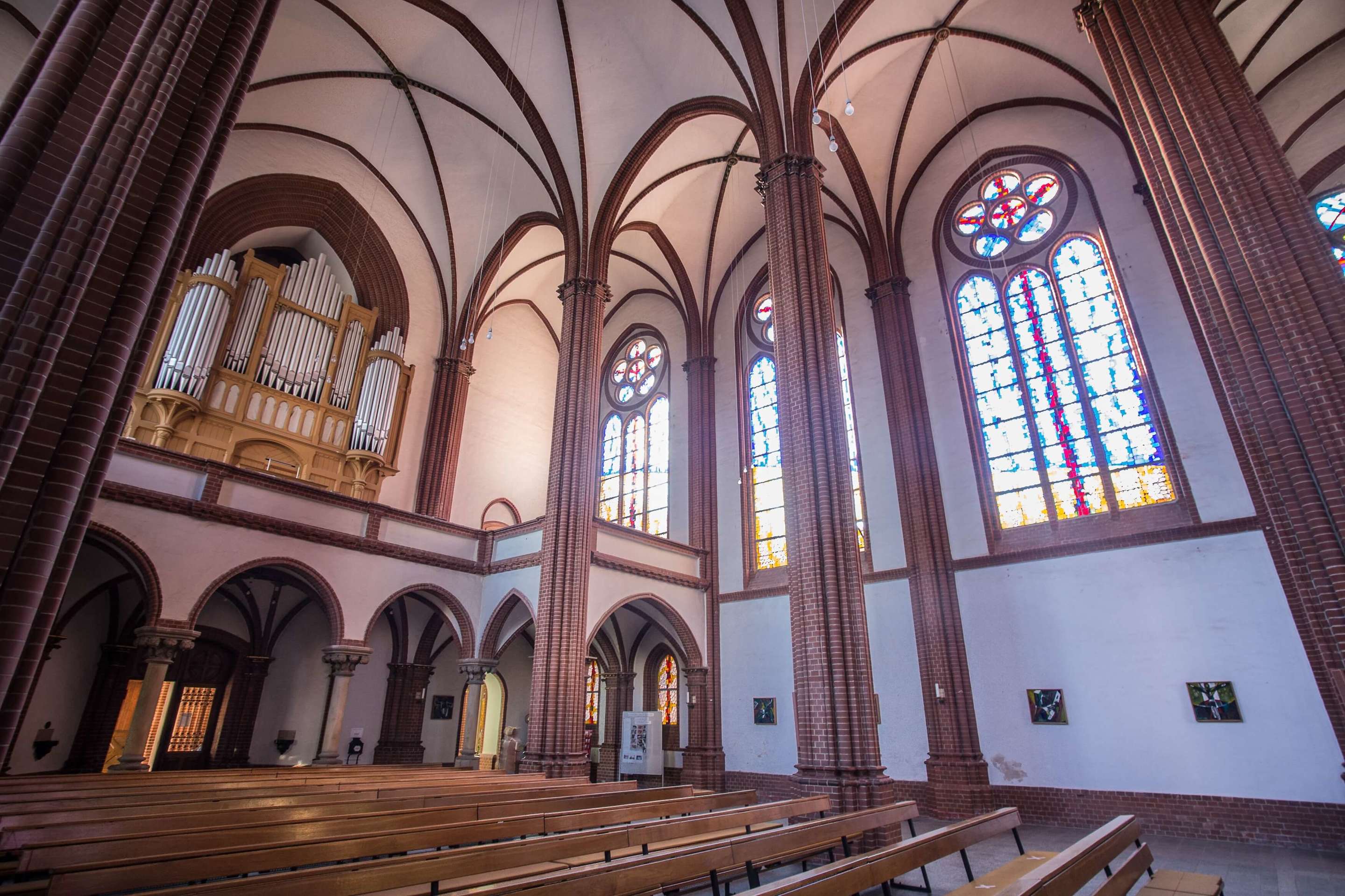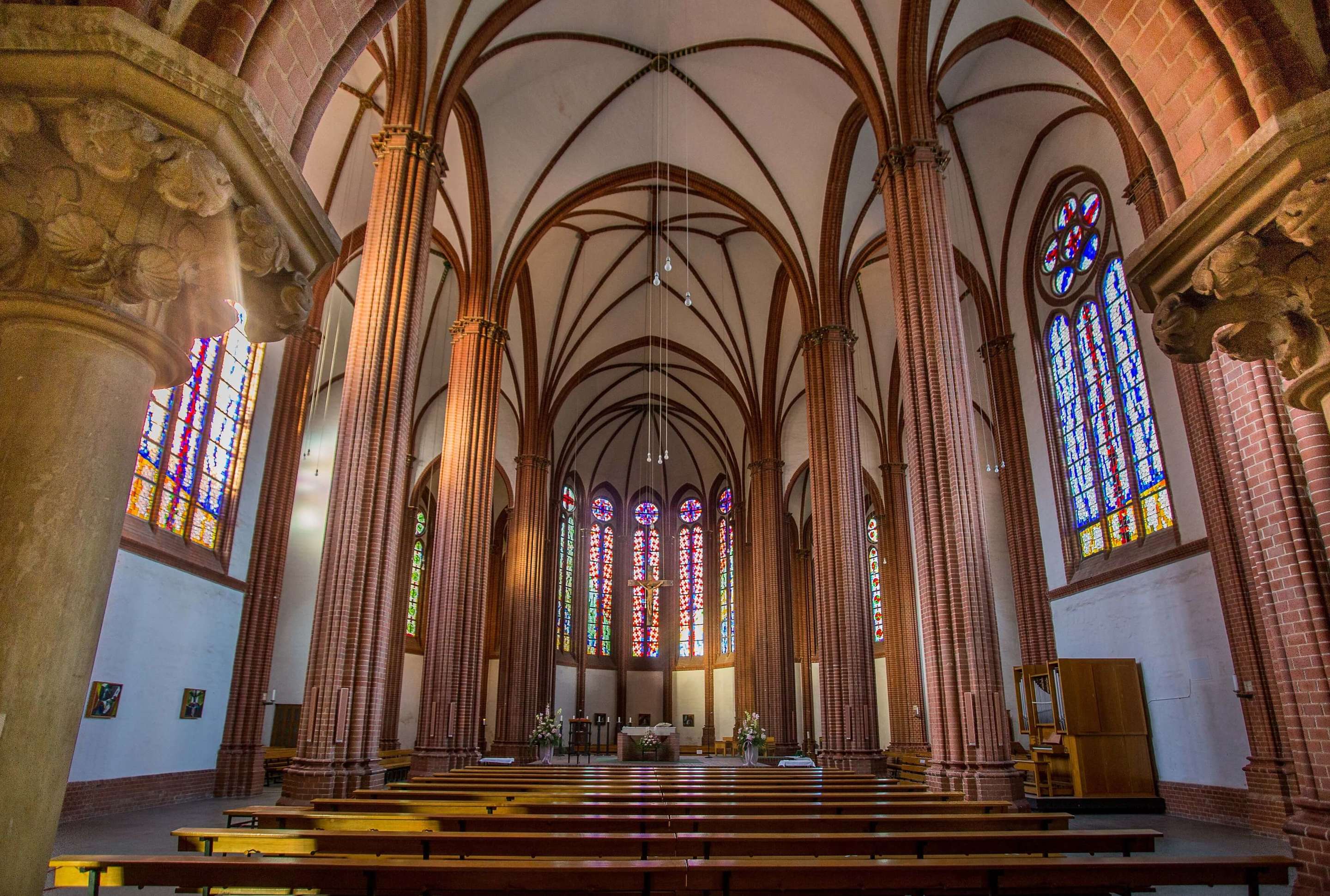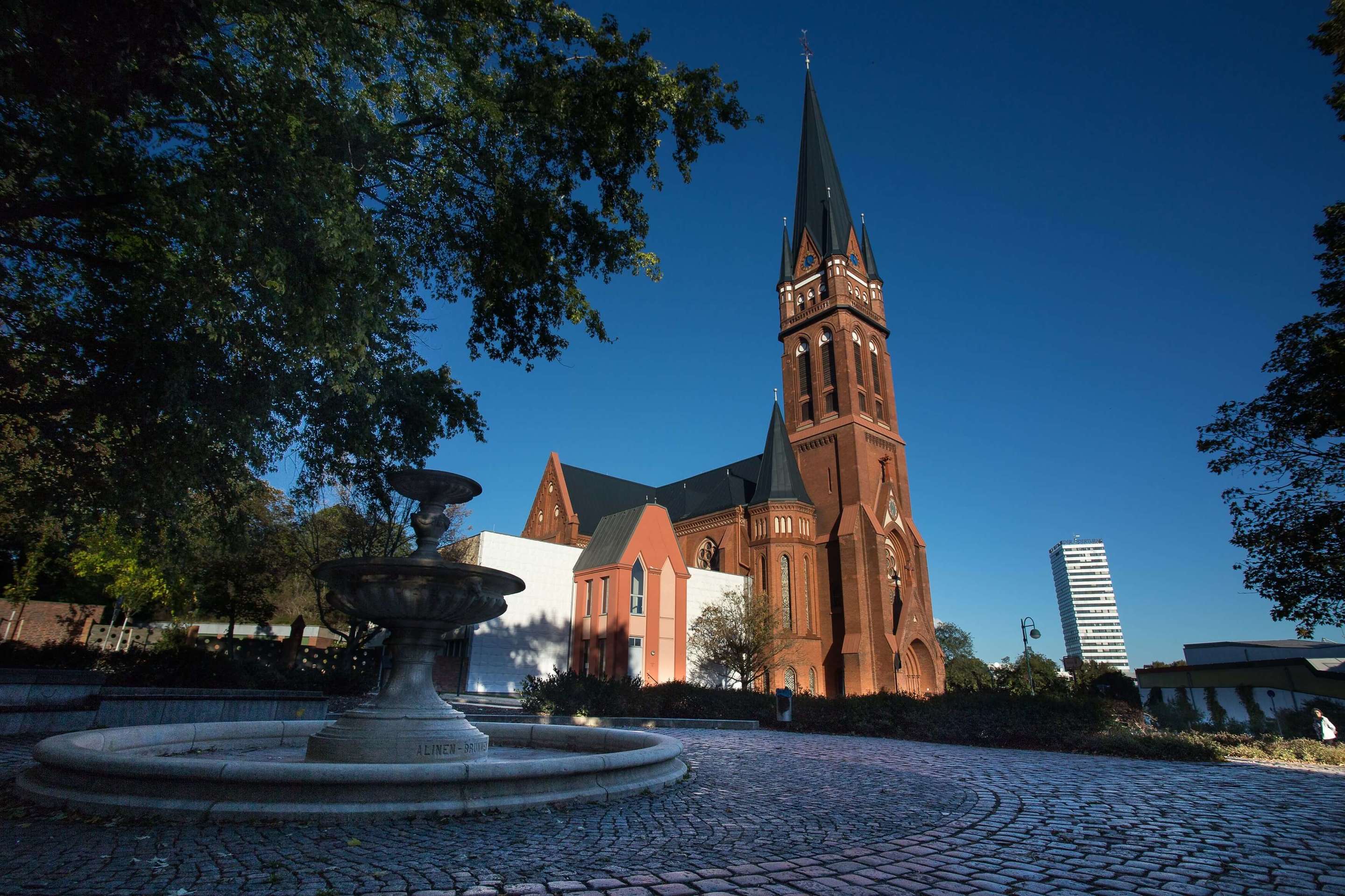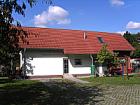Catholic Church of the Holy Cross
Catholic Church of the Holy Cross
The Catholic community in Frankfurt (Oder) had to fight for a long time in the 19th century to build its own church. Only after a complaint to the Ministry of Public Works was permission granted. The foundation stone was finally laid in 1897 and the church was consecrated in 1899 (architect: Engelbert Seibertz). The result was a three-bay hall building with a south-west tower in neo-Gothic style.
The organ was installed in 1901-02 (46 stops), again by the Frankfurt firm Wilhelm Sauer. The church has four bells.
From 1967, the church interior was fundamentally remodelled (architect: Artur Becker). This included the creation of new coloured glazing with the theme ‘The inbreak of God's light into the world’.
The Stations of the Cross designed by a student of Karl-Schmidt-Rottluff, which thematises the skyscrapers of Frankfurt (Oder), are interesting.
The organs are by far the most valuable pieces of equipment in the parish church of the Holy Cross. The large organ had to wait another two years after the consecration of the church in 1899 until the cost of 18,000 marks was secured. The small organ from the church in Regierungsstraße could not even come close to filling the 13,000 cubic metre space. Contemporary witnesses described its sound and appearance as ‘pitiful’.
On Christmas Eve 1901, the opus 860 by court organ builder Wilhelm Sauer was played for the first time on Christmas Eve. The inspection report by the royal music director and cathedral conductor Max Filke dated 18 January 1902 gave the organ top marks in all respects. In addition to the precise craftsmanship, the effect of the entire organ was described as ‘powerful’ and the fullness of sound as ‘great’, which meant that the organ was able to fully control and lead a full-sounding folk song in the packed church. The reason for this was the 46 sounding stops with their ‘salt in the organ’, the 4 reeds (Trompete 8‘ and Posaune 16’ in the Pedal, Trompete 8‘ in the Hauptwerk and Coranglais 8’ in the II.
The construction corresponded to the then common and cheaper pneumatic system with cone chest. In return, a typical pneumatic delay between the attack of the note and its sounding was accepted, which is still noticeable today, especially in the Pedal.
adresse
Franz-Mehring-Straße 4
Frankfurt (Oder)
Frankfurt (Oder)









